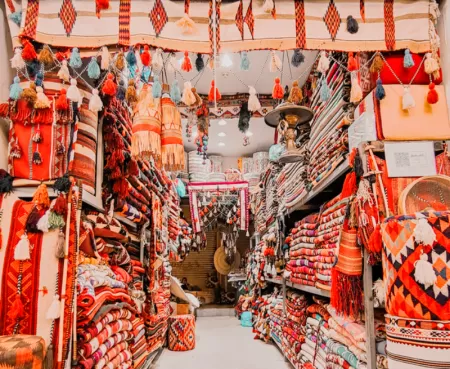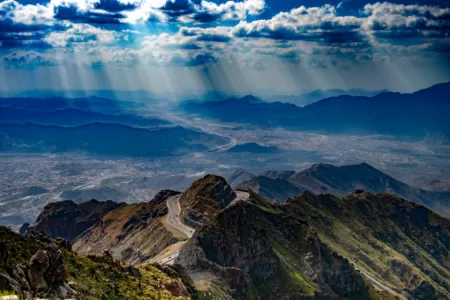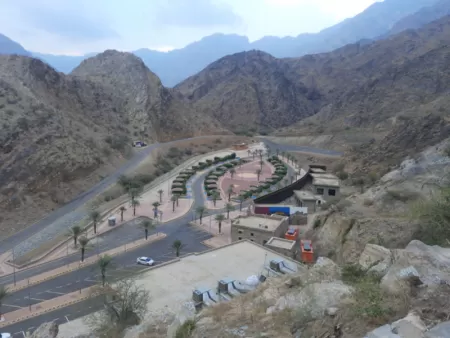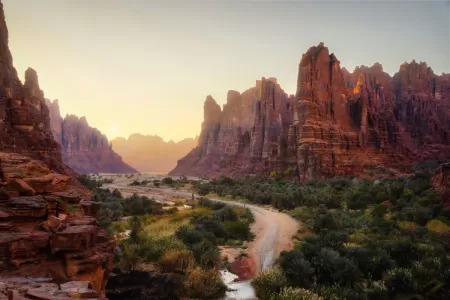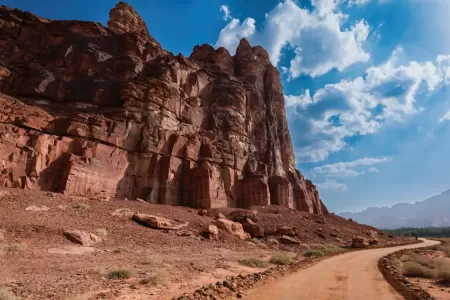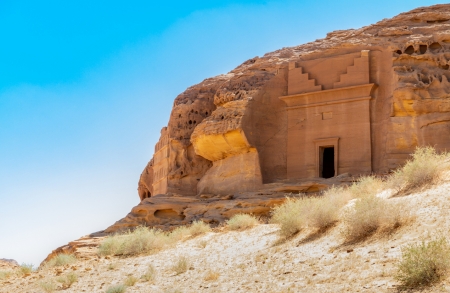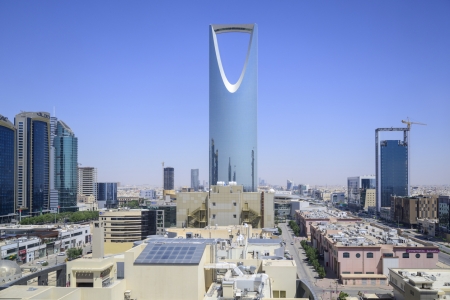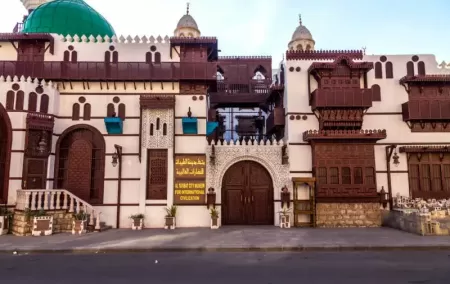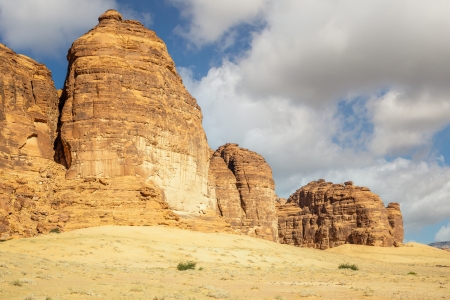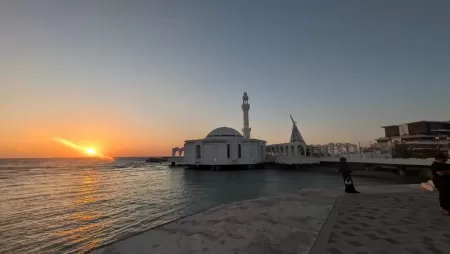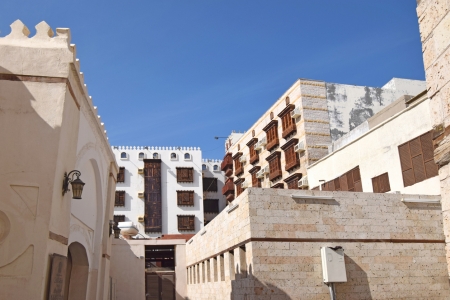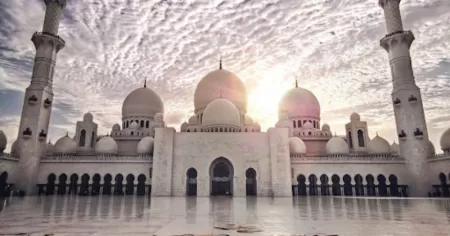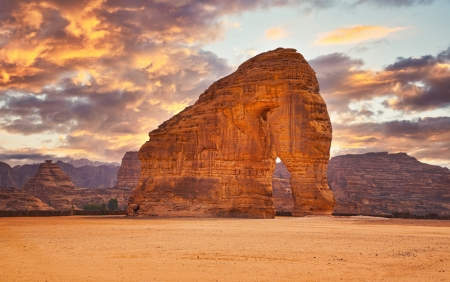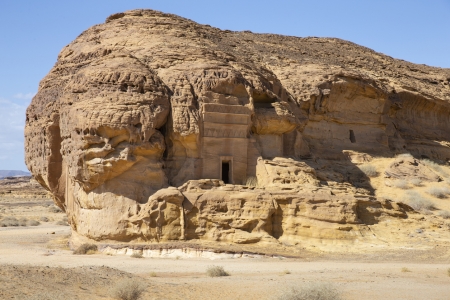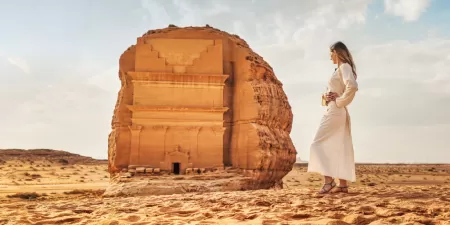Abha City
Abha City, Saudi Arabia's "Bride of the Mountain," is a verdant oasis in the Asir Mountains known for its mild climate and lush landscapes. Explore historic sites like Shadda Palace, enjoy cable car views, and immerse yourself in nature at Asir National Park. This captivating destination redefines the Arabian Peninsula experience.
.webp)
Perched at a breathtaking 2,270 meters above sea level, Abha emerges from the Asir Mountains like a verdant jewel defying Saudi Arabia's desert reputation. This highland sanctuary has earned the enchanting moniker "Bride of Mountain" – a title that captures both its elevated majesty and the surprising grace of its mountain-cradled existence.
The city presents a climatic revelation that challenges preconceptions about the Arabian Peninsula. Where scorching temperatures dominate much of the kingdom, Abha maintains a refreshingly temperate character, with mercury rarely climbing beyond 35°C. This thermal oasis creates conditions that seem almost mythical against the backdrop of Saudi Arabia's typically arid landscape.
Positioned 80 kilometers east of the Red Sea's azure waters and 850 kilometers southwest of Riyadh's urban sprawl, Abha occupies a geographical sweet spot that has shaped its distinctive character. The city unfolds across four distinct quarters, each bearing witness to centuries of strategic importance through an ancient fortress and characteristic hilltop fortifications that crown the surrounding peaks.
Perhaps most fascinating is the region's meteorological anomaly – the surrounding Asir area captures up to 500 millimeters of annual rainfall. This precipitation feeds the lush landscapes that cloak the mountains in green, creating an agricultural abundance that supports a thriving population of 334,290 residents as recorded in 2022. Such rainfall figures represent a startling departure from typical Saudi Arabian precipitation patterns, contributing to ecosystems that flourish where one might expect only rocky slopes and sparse vegetation.
This mountain enclave weaves together natural splendor, moderate climate, and cultural depth into a tapestry that distinguishes it from conventional Saudi destinations, offering discoveries that extend far beyond typical desert experiences.
How to Reach Abha
Access to this mountain sanctuary has evolved considerably, presenting travelers with multiple pathways to reach the Asir highlands. Each route offers its character, from swift aerial approaches to scenic overland adventures that unfold Saudi Arabia's remarkable geographical diversity.
Air Travel: Abha International Airport
Abha International Airport stands as the primary aerial gateway to the Asir Region, strategically positioned 16 kilometers from the city center. This aviation hub orchestrates connections across 10 destinations spanning 3 countries, weaving Abha into both domestic and international flight networks.
The airport hosts an impressive roster of carriers:
- Saudi Arabian Airlines (Saudia), Flynas, and flyadeal maintain domestic links across the kingdom
- International operators, including Qatar Airways, Nile Air, Flydubai, and Air Arabia, extend regional connectivity
Flight durations reveal Abha's accessibility: Riyadh requires merely 1.5 hours of flight time, while Jeddah sits just 1 hour away. The most extensive route stretches to Cairo, covering 672 miles (1,082 kilometers) across 2 hours and 45 minutes. Upon arrival, ground transportation whisks passengers to the city center within 20 minutes via taxis and airport shuttles.
Overland Routes: Roads Through Changing Landscapes
Road journeys to Abha transform transportation into exploration, revealing Saudi Arabia's dramatic topographical transitions. Riyadh lies approximately 1,000 kilometers distant—a 10-hour expedition that can follow either Route 10 through Al Kharj or the marginally swifter Route 30 via Muzahmiyah.
Jeddah presents a more moderate 600-kilometer journey requiring roughly 7 hours, while eastern travelers from Dammam face the longest overland trek of 1,353 kilometers spanning 13 hours. The highway infrastructure connecting these major centers to Abha maintains excellent standards, with the coastal road linking Jeddah to Abha representing a significant engineering achievement completed in 1979.
These drives unveil one of Saudi Arabia's most captivating geographical narratives—the gradual metamorphosis from desert expanses to verdant mountain terrain. Winding mountain roads carve through dramatic topography, offering successive revelations of the region's stunning vistas.
Bus Networks: SAPTCO and Regional Services
Saudi Public Transport Company (SAPTCO) maintains extensive bus networks linking Abha with major urban centers throughout the kingdom. These intercity coaches incorporate modern comfort amenities, ensuring passenger convenience across extended journeys.
Recent developments have strengthened local transportation infrastructure through SAPTCO's five-year contract worth 112.99 million Saudi riyals, encompassing public transport operations across Abha, Khamis Mushait, and Ahad Rufaidah. This investment enhances visitor mobility within the city, facilitating easier exploration of local attractions.
Eastern region travelers can access bus services from cities like Dammam, typically routing through Riyadh connections. These journeys involve multiple stops and require considerably more time than air travel, yet provide an economical alternative for budget-conscious explorers seeking an unhurried approach to the mountains.
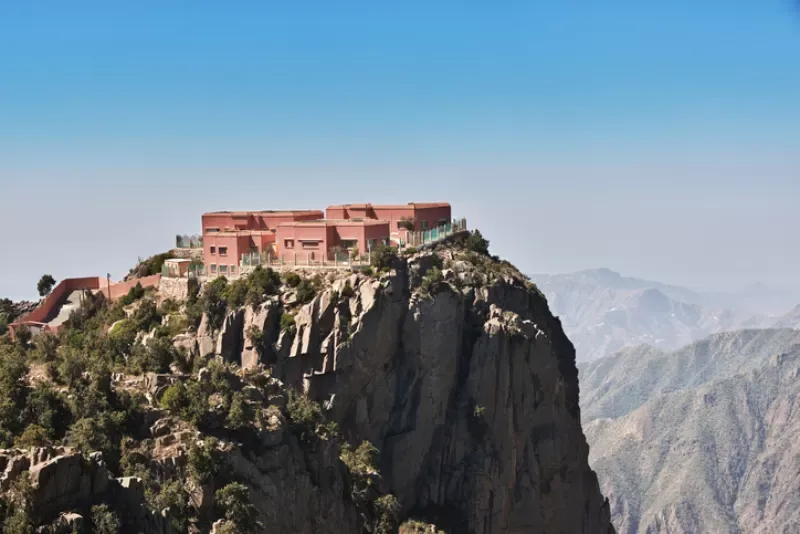
Top Things to Do in Abha
Abha's attractions reveal layers of cultural depth and natural wonder that distinguish this mountain realm from Saudi Arabia's more familiar landscapes. Each destination tells a story of adaptation, artistry, and the remarkable ways human settlements have flourished in these elevated terrains.
Visit the Art Street and the jacaranda trees
The creative pulse of Abha beats strongest along Art Street, where artistic expression mingles with one of nature's most spectacular seasonal displays. Spring awakens over 15,000 jacaranda trees throughout the city, creating a purple cathedral of blossoms that transforms Art Street into a tunnel of violet light. This pedestrian thoroughfare houses approximately 10 art galleries, each offering glimpses into local creative traditions, while cafes provide perfect vantage points for observing the floral spectacle. The annual Jacaranda Season festival at Al Muftaha Village marks the peak of this botanical celebration, drawing visitors who come specifically to witness this remarkable color transformation.
Explore Shadda Palace and historical forts
Shadda Palace stands as a testament to Abha's administrative heritage, its origins reaching back to 1820 when it served as the region's primary seat of governance. The structure now functions as a museum, preserving traditional utensils, period furniture, antique coins, and early photographic records that chronicle local life across generations. Built in 1927 for the provincial governor, the palace exemplifies traditional Asiri architectural principles – high walls and strategically minimal windows that prioritized privacy and protection. Visitors in a Saudi Trip can explore this historical treasure Saturday through Thursday without charge, making it one of Abha's most accessible windows into the past.
Ride the cable car at Jabal Sawda
Four distinct cable car routes thread through Abha's mountain landscape, each offering unique perspectives on the Sarawat range's dramatic topography. The most remarkable of these aerial journeys connects to the Abha Palace Hotel Station, suspended between just two pillars across a full kilometer – an engineering feat that may be unique worldwide. These elevated vantage points reveal the full scope of the surrounding peaks, with optimal viewing conditions occurring during early morning and late afternoon hours when natural lighting creates the most striking photographic opportunities.
Tour the Habala Hanging Village
Habala Village clings to cliff faces in what appears to be a gravity-defying feat of traditional engineering. Stone dwellings feature intricate architectural details and wooden balconies that seem to grow organically from the rocky mountainside. The village's name derives from the rope ladders ("habals") that once provided the only access to these precipitous homes, though today a 600-meter cable car route connects visitors to this aerial community. From this elevated perch, the mist-wrapped Asir Mountains unfold in panoramic splendor.
Enjoy local cuisine and traditional markets
Souq Al Thulatha – the Tuesday Market – represents the beating heart of regional commerce and cultural exchange. Vendors display traditional garments, handcrafted items, jewelry, and the various honey varieties that reflect the area's diverse flora. Local gastronomy centers around dishes like Haneeth, prepared in underground sand pits using time-honored techniques, and Aseeda, a substantial porridge that pairs with soups and yogurt. These hearty preparations reflect both Abha's cooler climate and the agricultural richness that sets this region apart from Saudi Arabia's more arid zones.

Where to Stay and Eat
Accommodation and culinary experiences in Abha reflect the city's distinctive highland character, where mountain hospitality meets the agricultural bounty of the Asir region. The lodging and dining landscape mirrors the city's unique position as Saudi Arabia's temperate retreat.
Popular hotels like the Abha Palace Hotel
Abha Palace Hotel commands a prime position along the shores of Al Sad Lake, where guest rooms frame panoramic vistas of both the tranquil waters and the dramatic mountain amphitheater beyond. This 5-star establishment provides spacious quarters equipped with contemporary amenities including flat-screen televisions, mini-bars, and private bathrooms. The hotel's wellness facilities include a spa complex, indoor swimming pool, sauna, and hot tub, offering restorative options after days spent exploring the mountain terrain.
Citadines Abha presents a modern alternative positioned along King Fahd Road, strategically placed between Abha and Khamis Mushait. Additional well-regarded establishments include W Suites Hotel, Sarwat Park Hotel, and Blue Inn, each contributing to the city's expanding hospitality infrastructure.
Local dishes to try: Kabsa and more
The culinary traditions of Abha showcase both national Saudi flavors and regional mountain specialties. Kabsa stands as the kingdom's signature dish—aromatic rice infused with cloves, cardamom, saffron, and cinnamon, crowned with tender chicken, lamb, or occasionally camel meat.
Regional mountain cuisine includes distinctive preparations:
- Haneeth - meat slow-cooked in outdoor iron pots or specialized sand pits called "mahnaz," traditionally accompanied by rice
- Mandi - featuring meat prepared in tandoor ovens, similar to Kabsa but with unique cooking methods
- Aseeda - a substantial wheat flour porridge customarily consumed using three fingers, reflecting ancient eating traditions
Best areas for shopping and souvenirs
Souq Al Thulatha (Tuesday Market) represents the region's most significant traditional marketplace, where centuries-old trading practices continue. The market displays traditional garments, handicrafts, jewelry, and honey varieties that reflect the area's agricultural prosperity.
Abha Mall caters to contemporary shopping preferences with international and domestic brands, while Agrab Market maintains a traditional market atmosphere through stalls offering spices, perfumes, handicrafts, and textiles. Al Muftaha Art Village specializes in artisan creations, featuring paintings, pottery, and handcrafted items produced by local artists.
Hotel concierge services typically coordinate sightseeing excursions and market visits, facilitating access to the city's commercial districts.
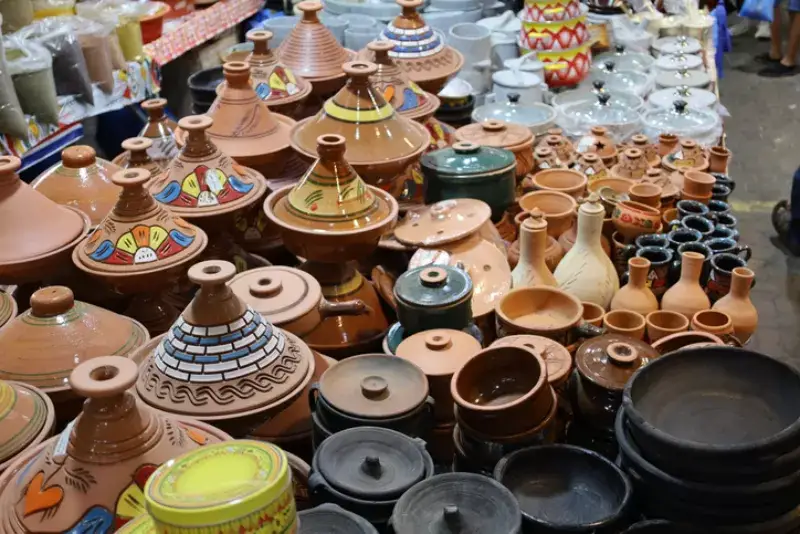
Customize Your Dream Vacation!
Get in touch with our local experts for an unforgettable journey.
Plan Your TripNature and Outdoor Attractions
The ecological tapestry surrounding Abha reveals a natural phenomenon that defies the Arabian Peninsula's conventional image. These mountain slopes harbor ecosystems that flourish where desert conditions typically prevail, creating outdoor sanctuaries that beckon both scientific curiosity and adventurous exploration.
Asir National Park and Garf Raydah Reserve
Raydah Natural Reserve occupies 9.33 square kilometers of protected wilderness, established in 1989 as a sanctuary for some of Arabia's most elusive wildlife. This ecological haven shelters the Arabian Wolf, Caracal, Rock Hyrax, Mongoose, and Nubian Ibex within its boundaries. Ornithological treasures include the Yemen thrush, Arabian Red-Legged Partridge, Arabian Woodpecker, and Yemen Linnet – species that represent the region's unique biogeographical position.
The reserve's topography tells a story of water and stone, where steep slopes bear dense vegetation dominated by ancient juniper trees. Water tributaries carve their descent from cliff summits into Raydah Valley below, creating microclimates that nurture life. This intricate habitat matrix supports approximately 397 plant species, with numerous endemics found nowhere else on Earth.
Hiking and viewpoints in the Sarawat Mountains
The Sarawat range contains Saudi Arabia's most elevated terrain, crowned by Jabal Sawda at 3,133 meters above sea level. Ancient footpaths weave through these heights, some tracing routes established 250 years ago by mountain communities. Jebel Al-Akhdar (Green Mountain) rises to 2,340 meters, offering commanding perspectives across Abha's urban sprawl.
Photographers and sunrise enthusiasts gravitate toward Abha Lake Viewpoint, where light transforms the landscape during dawn and dusk hours. The mountain passages known as "Aqabat" represent engineering marvels carved through solid rock. Aqabat Al-Dhala in Rijal Almaa extends 11 kilometers through tunnels and strategic viewpoints that frame the surrounding wilderness.
Rainfall, greenery, and unique flora
Abha's annual precipitation averages 883 millimeters – a figure that challenges expectations about Arabian Peninsula hydrology. August emerges as the peak rainfall month, delivering approximately 219 millimeters of moisture to the mountain slopes. This water abundance sustains dense juniper woodlands, wild olive groves, and diverse cacti populations that create unexpected botanical landscapes.
The flora includes several endemic and endangered species: Centaurothamnus maximus, Senecio asirensis, and Huernia saudi-arabica represent botanical treasures that evolved in isolation. Asir's mountains experience dual wet seasons spanning February through April and July through August, maintaining temperatures that rarely approach the extreme heat characteristic of lower elevations throughout the kingdom.
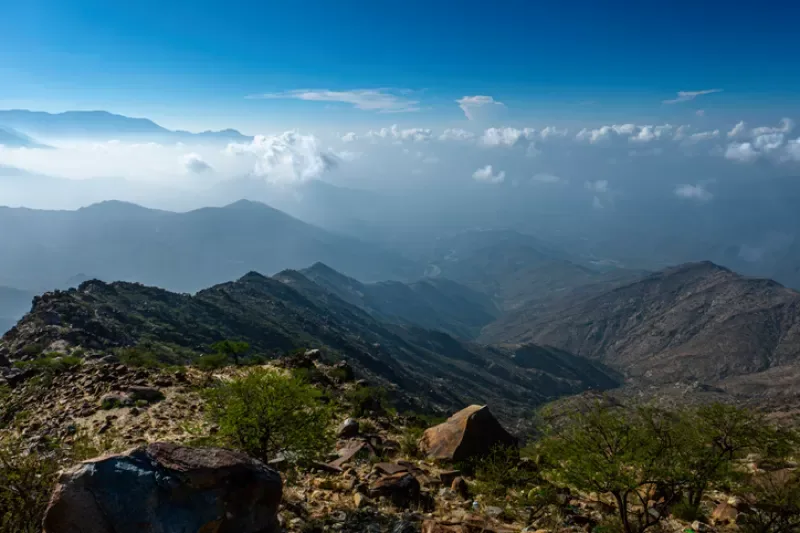
Conclusion
The "Bride of Mountain" reveals herself as something far more extraordinary than conventional Saudi Arabian destinations might suggest. This highland realm challenges every assumption about the Arabian Peninsula, where temperate breezes replace scorching winds and emerald canopies flourish where rocky barrenness would typically dominate.
What distinguishes Abha extends beyond mere altitude or scenic beauty. The city embodies a geographical anomaly that has fostered unique cultural expressions and ecological phenomena. From the artistic vibrancy that flows through purple-lined thoroughfares to the architectural heritage preserved in mountain-top strongholds, each element contributes to an experience that feels almost removed from the broader kingdom's arid character.
The sensory journey through this mountain enclave offers layers of discovery. Morning mist clings to ancient stone houses suspended on cliff faces, while afternoon light illuminates the intricate balance between human settlement and natural grandeur. Traditional markets pulse with the rhythms of highland commerce, where local produce reflects the agricultural bounty that this elevated climate makes possible.
Perhaps most remarkable is how Abha exists as both refuge and revelation. The city provides respite from Saudi Arabia's intense heat while simultaneously unveiling landscapes and lifestyles that redefine expectations about this corner of the Arabian Peninsula. Each cable car ascent, each winding mountain path, each encounter with endemic flora speaks to a different Saudi story—one written in cooler air and nurtured by unexpected precipitation.
For those seeking to understand Saudi Arabia's geographical and cultural diversity, Abha stands as essential evidence that the kingdom contains worlds within worlds. This mountain bride offers not just an escape, but an entirely different lens through which to appreciate the complex tapestry of Arabian landscapes and heritage.
FAQs
Q1. What makes Abha unique among Saudi Arabian cities?
Abha stands out for its mild climate, lush greenery, and mountainous landscape. Unlike typical desert regions in Saudi Arabia, Abha enjoys cooler temperatures, substantial rainfall, and is known for its purple jacaranda-lined streets and rich biodiversity.
Q2. When is the best time to visit Abha?
The ideal time to visit Abha is during the summer months from June to September. During this period, the city experiences pleasant weather and moderate temperatures, making it a perfect escape from the intense heat found in other parts of Saudi Arabia.
Q3. What are some must-visit attractions in Abha?
Key attractions include the Art Street with its jacaranda trees, Shadda Palace museum, the cable car ride at Jabal Sawda, the historic Habala Hanging Village, and the traditional Souq Al Thulatha (Tuesday Market) for local crafts and cuisine.
Q4. How can visitors experience Abha's natural beauty?
Visitors can explore Asir National Park and Garf Raydah Reserve for diverse flora and fauna, hike in the Sarawat Mountains for panoramic views, and visit viewpoints like Green Mountain (Jebel Al-Akhdar) for stunning city vistas, especially during sunrise and sunset.
Q5. What local dishes should tourists try in Abha?
Visitors should sample Kabsa, the national dish of Saudi Arabia, as well as regional specialties like Haneeth (meat cooked in a sand pit), Mandi (slow-cooked meat with rice), and Aseeda (a traditional wheat flour porridge). These dishes reflect the unique climate and agricultural abundance of the Abha region.


